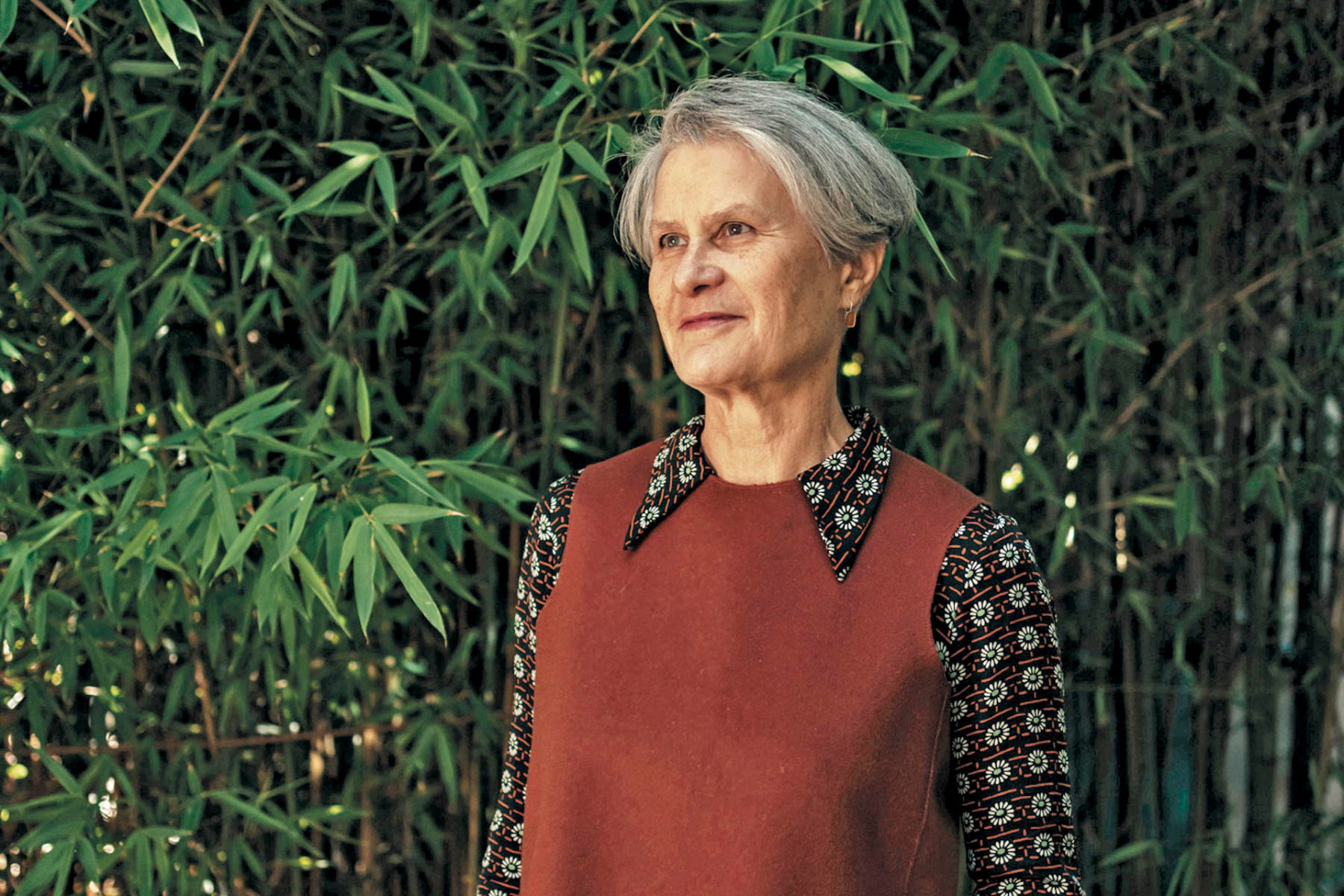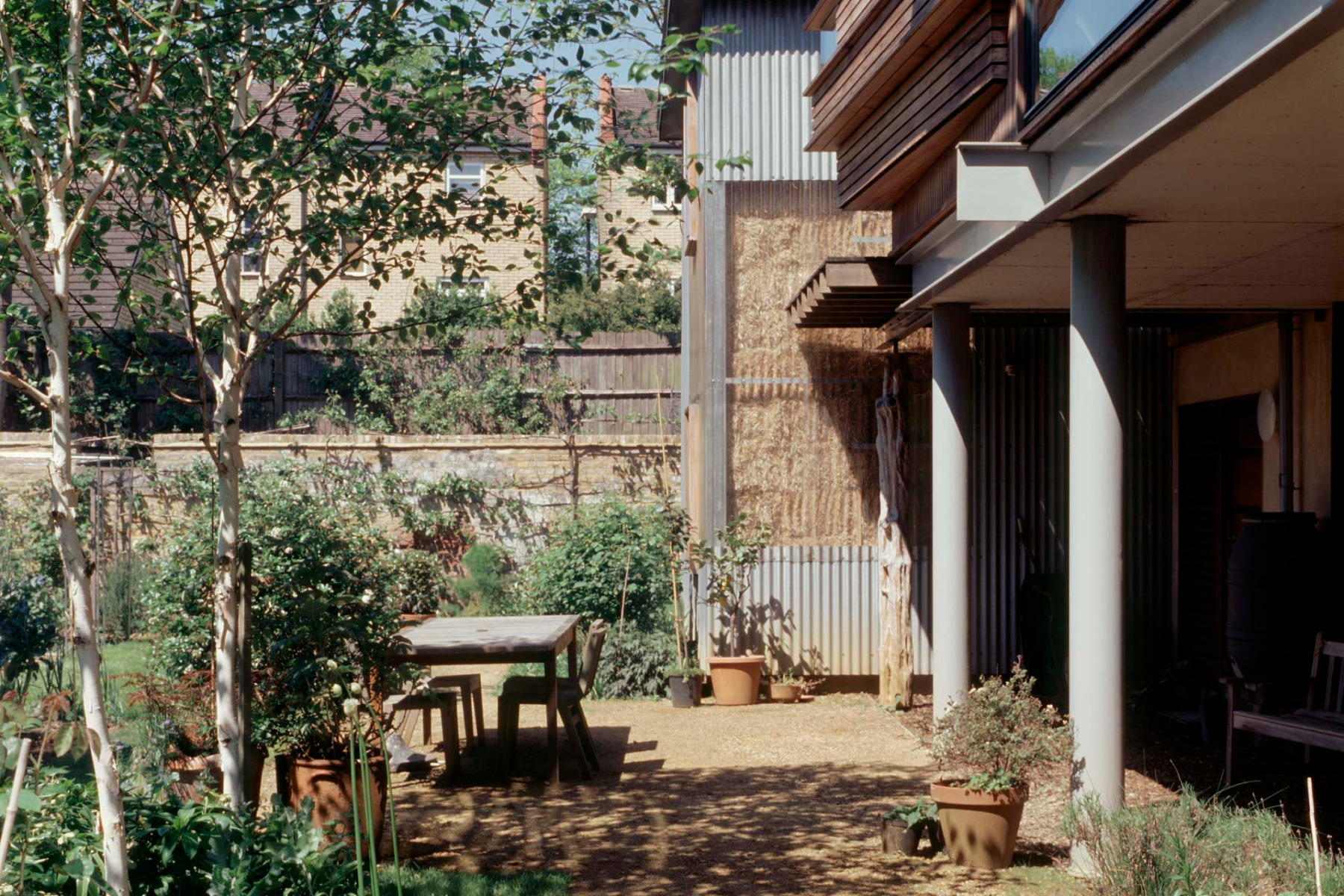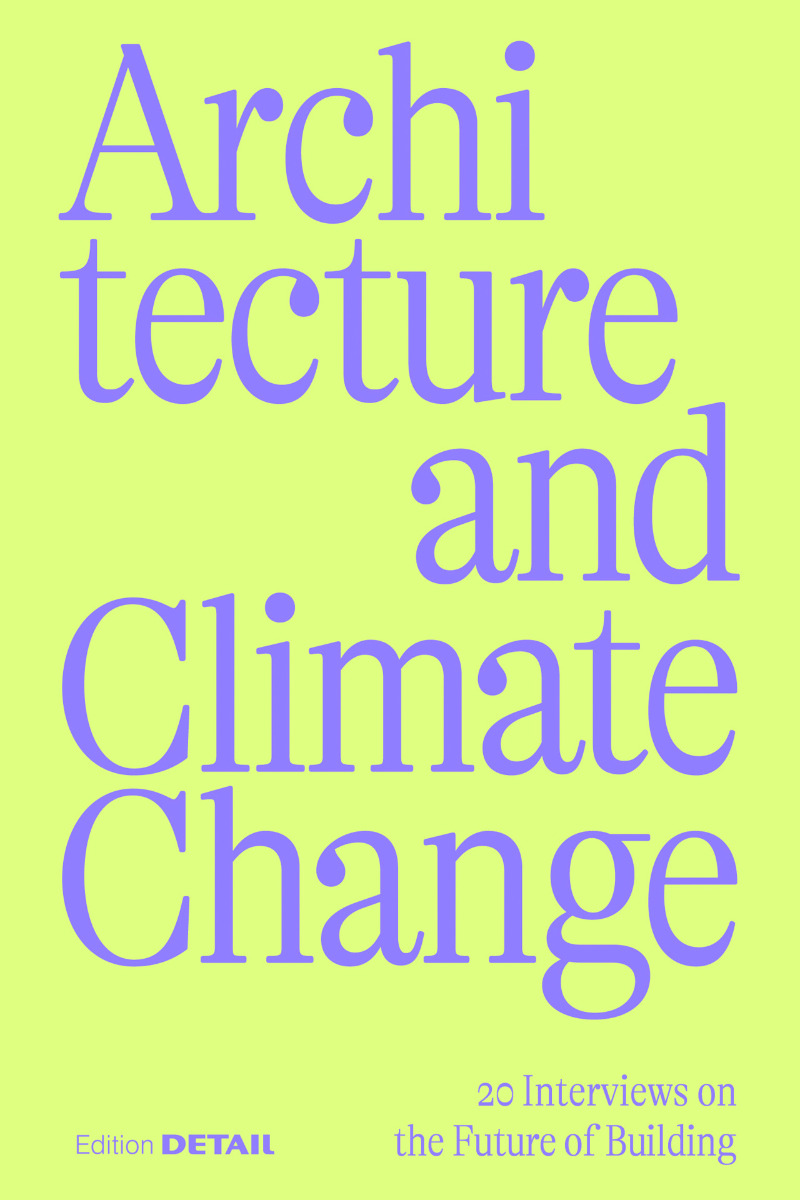Interview with Sarah Wigglesworth
Creative Solutions to Combat the Climate Crisis

Sarah Wigglesworth, © Jim Stephenson
The British architect Sarah Wigglesworth has become famous for her straw bale house in London. In this interview with Heide Wessely, she describes how entire cities could be designed sustainably. The interview was published in the new book Architecture and Climate Change by Edition Detail.
In 2001 you built the Straw Bale House to test whether this sustainable yet unconventional building material suited to an urban context. The building won several awards but has not found many imitators. Why not?
The project was a radical departure from what was common in architecture at the time – for us, that was the incentive. We were trying to shift the debate and open up the conversation around the aesthetic issues of green architecture, which tended to be small vernacular projects in rural areas. We wanted to prove that cities can be green places as well. We rigorously decided on our material palette based around issues like embodied carbon, toxicity, pollution, and danger to people – issues that weren’t common at that time. As a result, our choice of products was quite hybrid. It didn’t follow the normal canon of high tech, low tech. The architectural press and profession didn’t understand why we were combining these strange things altogether. For example, high-quality windows and straw bale seem to be at opposite ends of the conventional spectrum. However, the public responded really positively. Another reason was that it’s not an expensive building. It puts its money into space rather than representation. Its value system is different from most people’s value systems. Most people build houses for status reasons, and they want it to look expensive, and they want it to look robust. There was also a fear of being unusual and going into the unknown realm of challenging building regulations.


Straw bale house in London, © Paul Smoothy
So clients aren’t brave enough to have railroad ties used as window lintels, straw insulation, and walls made out of sandbags?
Exactly. Where do these materials sit in the value system? When we built the building, it didn’t have much currency in the value system. Luckily, things have changed a bit. There is more awareness that we’re very wasteful as a society. I’m not suggesting that bales are now mainstream, but I think everybody is now much, much more aware of issues such as recycling, the circular economy, and repurposing existing buildings. Renewable building materials that sequester carbon instead of emitting it are also gaining in importance, such as hemp. You can use it to weave carpets, but also build entire houses with it. When combined with lime, it becomes so strong that it can even be used for foundations. In France, there are about 600 buildings made out of hemp; in the UK, there are only about 25. I think it really needs to get more on the map.
Why has it been so hard for the industry to adopt sustainable construction methods and renewable materials? The UN’s 2020 Global Status Report for Buildings and Construction revealed that global CO2 emissions are at record levels – and the construction sector is responsible for 38 % of that.
I’m baffled that it hasn’t gotten more purchase with the construction industry because it’s just such an obvious thing that we have to address. I think construction is risk-averse and monopolistic. Perhaps there are too many in the industry who are comfortable doing what they do.
What needs to change?
I think legislation is the answer. We need people committed to this agenda, who will invest more in new processes, new collection systems, rainwater drainage systems, alternative energy sources, new materials that are part of a circular economy etc. It’s not happening at the grassroots level. Of course, there are some exceptions, but I think, on the whole, people are not innovating enough, and they’re not addressing this problem out of their own moral compass. Everybody is waiting for someone else to make a move because they don’t want to be the one who will suffer from having to invest more in new processes or techniques that might not pay off in the end. By only waiting and watching, the situation gets worse – it’s a big loop that is very difficult to disrupt. The problem is that time is not on our side.
What can architects do about it?
Everybody has to do something, every one of us. We have to ask ourselves: Is it sustainable how we live, travel, shop, and eat? All these things present us with an ethical dilemma. It’s hard, but I think we have to make changes in nearly every part of our lives. As architects, we can influence opinion: of our clients, manufacturers, and policymakers. Our practice is small, but we have been working on sustainability in architecture for 25 years and have achieved quite a bit. We have produced low-energy schools and housing and are retrofitting old housing stock – a lot of which is social housing – to improve their environmental performance. It’s not very sexy work, but it’s very important work.
The construction industry accounts for around 55 % of materials consumption; only 1 % is reused. We seldom hear about that. On the other hand, there are loud calls to ban disposable cups and drinking straws. Does that make sense?
In the face of something that is as big as climate change, it’s very difficult for individuals to work out: What can I do? What can help? That is part of the dilemma. Doing without plastic cups is a small thing, but it’s a tiny thing that somebody can do easily. Shifting the construction industry is a huge issue that I can’t do anything about. But the plastic cup is a route into understanding your part in the bigger picture, which is good: it raises awareness.


Architecture and Climate Change. 20 Interviews on the Future of Building, © Edition Detail, 2024
How can we make our cities more sustainable?
One thing would be to ban cars from cities, and everyone should ride a bicycle. Then you should change the public realm so that all streets have trees and create sponge cities to cope with rainwater drainage. I would make all buildings out of cross-laminated timber to replace concrete completely. Although we need high density in the cities, I would not build tower blocks because they are wasteful and use a lot of energy because the transportation is vertical. To live a healthy life, we should be walking, cycling, using the stairs, and seeing our neighbours more often – all the things that make us feel good. Inclusion and diversity also are very important in architecture; there are currently different groups of people who feel quite excluded by the way we design the built environment.
Your vision reminds me of the 15-minute city, where you can reach all essential facilities in 15 minutes by bike or on foot. In reality, it usually takes longer to get to work …
Most cities have been planned around men’s journeys and the idea that women stay at home in the suburbs and men travel into town to their offices or factories. It’s a crazy notion, yet cities cement that into the way we live. We need to get away from that and support more sustainable ways of living. Vienna has an interesting approach: every urban planning project must be assessed as to how it will affect women’s lives. Their journey patterns tend to be very different from men’s. Women often do most of the housework, do the shopping, drop the kids at school, go to work, and care for their elders. What we design impacts women’s lives. So far, they have effectively been ignored, and a mind shift is required to make things easier for them.
That sounds like a clear case of discrimination.
Women are still not equal; but if we manage to give more weight to women with their experiences and the way they live, we might get a more equal and more sustainable society.
Sarah Wigglesworth founded her practice in London in 1994. Most of her team are women. Increasing women’s presence in architecture is one of the award-winning architect’s priorities. She also focuses on the participation of users and clients in the design process, interdisciplinary planning, especially for cities, and sustainable construction.
A look inside the book: Browse here
Architecture and Climate Change. 20 Interviews on the Future of Building.
Editor: Sandra Hofmeister
Languages: German, English
Publication date: April, 2024
Publisher: Edition Detail, Munich 2024
Ordner now





